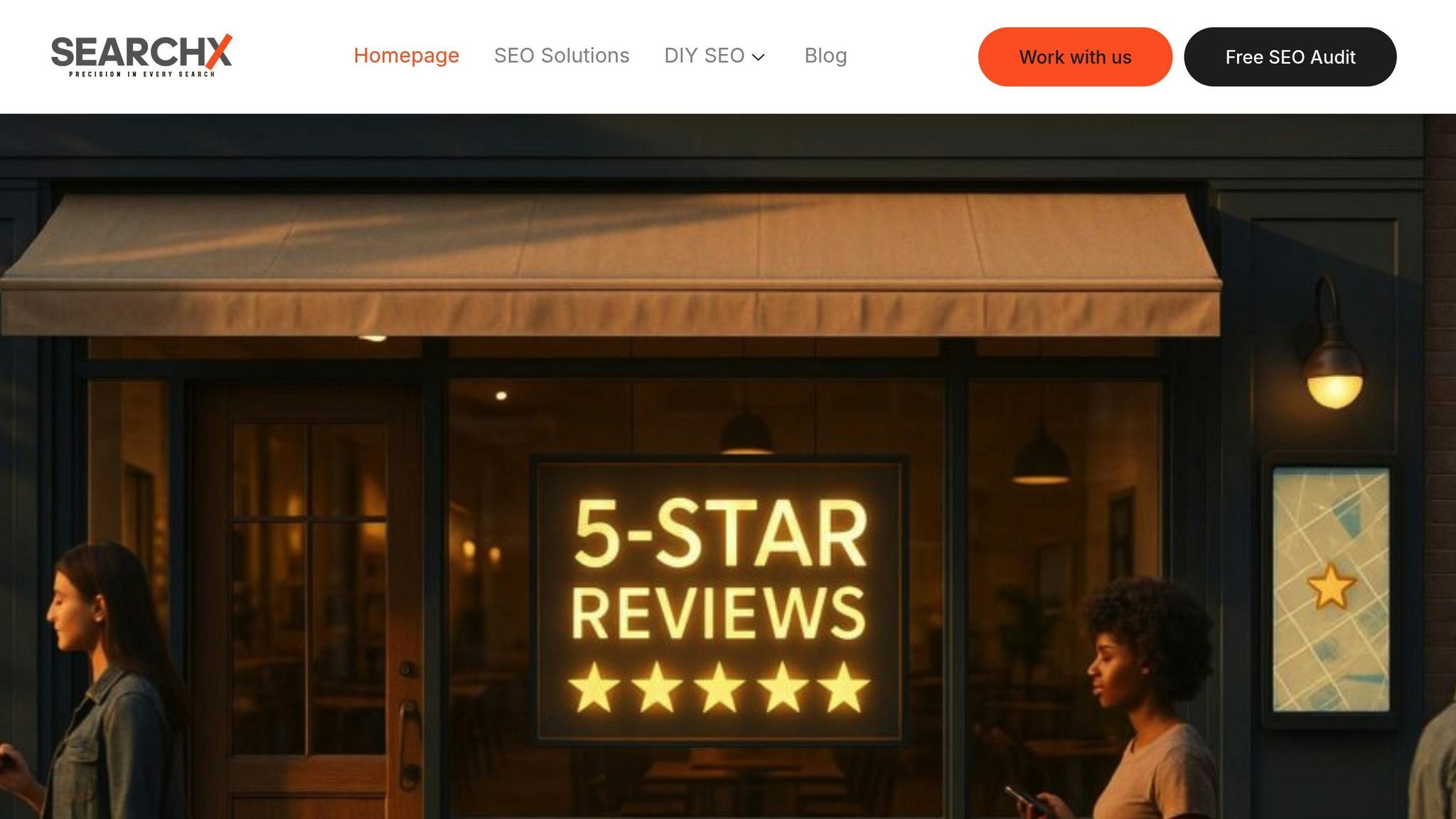Link velocity is the rate at which your website gains or loses backlinks over a specific period. It’s not just about the number of links but also the timing and quality of those links. Search engines use this as a signal to evaluate whether your backlink growth appears natural or manipulative.
Here’s what you need to know:
- Positive link velocity: Gaining more links than you lose.
- Negative link velocity: Losing links faster than you gain them.
- Why it matters: Sudden spikes or unnatural patterns can trigger penalties, while steady growth signals trustworthiness to search engines.
- How to measure: Track new and lost backlinks over time, focusing on unique domains and link quality.
- Best practices: Create high-value content, build relationships, and monitor trends using tools like SearchX.
The goal? Maintain a balanced backlink profile that grows steadily over time to improve SEO without risking penalties.
Link Velocity: How Fast can you Build Links? [Webinar]
How to Measure Link Velocity
Measuring link velocity involves more than just tallying up backlinks – it’s about understanding the patterns, timing, and context of how your links grow or shrink over time. Regularly monitoring your backlink profile is essential to get a clear picture of your site’s SEO health.
Methods for Tracking Link Velocity
One simple way to track link velocity is by calculating the net change in backlinks over specific time periods, like daily, weekly, or monthly.
Start by establishing a baseline for your backlinks, then monitor changes over intervals that align with your site’s activity. For websites with frequent content updates or active campaigns, weekly tracking can provide actionable insights. On the other hand, newer or less-active websites might benefit from monthly reviews.
To get a complete picture, track both the total number of new links and the number of unique referring domains. Gaining links from multiple domains tends to carry more weight for SEO than getting several links from the same source.
It’s also important to consider the timing of link growth. Natural link velocity often aligns with key events like publishing new content, launching a product, issuing press releases, or seasonal trends. By comparing link growth to these activities, you can identify what’s driving organic growth.
These foundational metrics pave the way for leveraging specialized tools to simplify and enhance your analysis.
Tools for Link Velocity Analysis
SEO tools make it easier to monitor backlink changes and analyze growth trends. Many platforms offer features that track new and lost links, generate reports, and even provide historical data to help you spot long-term patterns.
While manual tracking can be insightful, automated tools offer greater precision by continuously monitoring changes. For example, platforms like SearchX provide detailed link velocity tracking as part of their backlink-building services. They also analyze competitor backlink profiles to give you a broader view of your SEO standing.
When selecting tools, prioritize those that offer real-time alerts for abrupt changes in your backlink profile. Sudden spikes or drops in link velocity can highlight opportunities to build on viral success or warn you of potential issues that need immediate attention.
How to Read Link Velocity Trends
Once you’ve gathered the data, the next step is interpreting the trends to refine your SEO strategy. Websites with natural link-building efforts typically show steady growth, punctuated by occasional spikes tied to successful campaigns or content.
A gradual, upward trend usually signals a healthy, sustainable backlink strategy. Small fluctuations within this trend are normal and nothing to worry about.
However, sharp spikes in link velocity can mean different things. Positive spikes might indicate viral content, media attention, or a strong marketing push. On the flip side, unusually high spikes could point to low-quality link-building practices, which might lead to penalties from search engines. Always assess the quality and relevance of the domains contributing to these spikes.
If you notice a decline in link velocity, it’s worth investigating further. Possible causes could include technical issues, removed or outdated content, expired domains, or increased competition. Keeping an eye on the ratio of gained to lost links can help you gauge the overall health of your backlink strategy.
A flat link velocity might suggest stability, but if it continues for too long, it could mean your outreach efforts need a refresh. By understanding these trends, you can make informed adjustments to improve your SEO performance.
Why Natural Link Velocity Matters
Search engines have gotten much better at spotting artificial link-building tactics, which makes maintaining a natural link velocity critical for your website’s credibility and rankings. The way search engines evaluate these growth patterns can have a direct impact on your SEO success.
How Search Engines Evaluate Link Velocity
Search engines view link velocity as a signal of quality, helping them determine whether your backlink growth looks organic or manipulated. Their analysis goes beyond just counting links – they also consider how quickly links are acquired, the variety of linking domains, and how your growth compares to other sites in your industry.
Google’s algorithms are designed to spot patterns tied to real-world events. For example, if your site suddenly experiences a massive spike in backlinks without any clear reason, it raises suspicion. Search engines expect logical connections between your link growth and your business activities.
They also evaluate the quality and relevance of the sites linking to you, along with anchor text diversity. A healthy link profile includes a mix of links from authoritative industry blogs, news outlets, social media, and partners. The anchor text should be varied, featuring your brand name, generic terms like “click here,” and natural keyword variations. On the other hand, artificial link-building often results in repetitive, over-optimized anchor text that doesn’t reflect genuine linking behavior.
These factors highlight why sticking to natural growth patterns is crucial for avoiding SEO risks.
Risks of Unnatural Link Velocity
Natural link velocity aligns with authentic business growth, but straying from these patterns can lead to serious consequences.
A sudden surge in backlinks can trigger algorithmic scrutiny, potentially resulting in ranking penalties or even removal from search results. When search engines detect unnatural patterns, they may devalue your entire backlink profile, not just the suspicious links.
Manual penalties are another serious risk. These occur when Google’s webspam team reviews your site and finds that you’ve violated their guidelines. Recovering from such penalties can be a long and difficult process, often requiring extensive link cleanup and formal reconsideration requests.
There’s also the threat of negative SEO attacks, where competitors try to harm your rankings by creating artificial link spikes. While Google has improved its ability to detect these attacks, they can still disrupt your rankings temporarily.
Unnatural link patterns can also hurt your brand reputation. Appearing in low-quality link networks or spammy directories not only damages your credibility with search engines but also with users and potential partners.
Benefits of Healthy Link Velocity
Maintaining a natural link velocity offers several advantages for long-term SEO success.
First, it helps your site build resilience against algorithm changes. Websites with organic growth patterns are less likely to see major ranking drops when search engines update their algorithms.
A steady stream of high-quality links also boosts domain authority over time, signaling to search engines that your site consistently provides value. This can lead to better rankings across multiple keywords and pages.
Natural link velocity often leads to increased referral traffic as well. When your backlinks come from reputable, relevant sources, they bring in visitors who are genuinely interested in your content or services.
Over time, your brand credibility grows as more trustworthy websites link to you. This kind of organic endorsement not only helps with SEO but also builds trust with potential customers and partners, creating more opportunities for future link-building.
Another benefit is the compounding effect of natural link growth. As your domain authority improves, it becomes easier to rank for competitive keywords and attract even more high-quality backlinks.
Finally, relying on natural link velocity offers a better return on investment. While it may take longer to see results compared to artificial tactics, the benefits are more sustainable and continue to deliver value over the long term.
How to Manage Link Velocity
Managing link velocity involves keeping a close eye on your backlink profile and encouraging steady, genuine growth over time.
Setting a Baseline for Link Velocity
Start by analyzing your backlink acquisition over the past 12–18 months. This will give you a baseline to measure against, while also helping you spot any seasonal trends that might influence link growth.
It’s important to consider your specific industry when setting benchmarks. For example, tech startups often experience fluctuations in link velocity due to product launches and announcements, whereas local service businesses tend to have more consistent growth patterns.
A healthy backlink profile should include a variety of high-quality links from different sources – think industry publications, partner websites, social media mentions, and organic editorial links. Be cautious if most of your links come from a single source type (e.g., 80% from one category), as that can make your growth appear unnatural.
Anchor text patterns are another key element to document. Natural link profiles typically feature around 60-70% branded anchor text, 20-30% generic terms like "click here" or "read more", and only 10-15% exact-match keywords. This balance helps maintain authenticity while improving your link velocity.
Strategies for Natural Link Growth
Once you’ve established your baseline, focus on strategies that encourage organic link acquisition. These approaches ensure your growth remains steady and natural.
- Original research and data studies: Content like market analysis reports, industry surveys, and proprietary data is highly linkable because it offers unique insights. Journalists, bloggers, and researchers often reference this type of content, leading to a gradual increase in backlinks over 6-12 months.
- Resource pages and comprehensive guides: Creating the go-to guide on a topic in your industry can naturally attract backlinks. Other websites will link to it as a valuable resource for their audience, helping you build a steady and sustainable link profile.
- Building industry relationships: Engage in forums, participate in professional discussions, and collaborate on projects with peers. Establishing yourself as a knowledgeable voice in your field often leads to mentions, citations, and collaborative content links.
- Guest content on reputable sites: Writing guest articles for respected industry publications can be a powerful way to gain high-quality backlinks. One well-placed guest post can deliver more long-term value than multiple contributions to lesser-known blogs.
- Newsjacking and trend commentary: Providing expert insights on breaking news or emerging trends in your industry can earn timely editorial links. Journalists and bloggers often link to this type of commentary, giving you natural spikes in link velocity tied to real-world events.
To keep your link-building efforts on track, consider using tools like SearchX to monitor and refine these strategies.
Using SearchX for Monitoring and Optimization

Natural link growth requires a combination of strategic content creation and ongoing monitoring, which is where SearchX can help. Their tools offer real-time backlink monitoring and technical SEO audits, ensuring your link velocity aligns with your business goals. For businesses with multiple locations, SearchX’s scalable solutions can help maintain consistent growth across all markets.
SearchX’s backlink building services focus on creating steady, high-quality growth patterns that search engines expect from legitimate businesses. They prioritize quality over quantity, which is key to building a credible and sustainable online presence.
What sets SearchX apart is their ability to integrate link velocity management with broader SEO strategies. By combining backlink monitoring with keyword research services, they ensure your link-building efforts align with your content and ranking objectives. This cohesive approach prevents the disjointed tactics that can result in unnatural linking patterns.
For those who prefer to take a more hands-on role, SearchX also offers DIY resources. These tools and guides empower you to monitor your own link velocity trends and make informed decisions about your backlink strategy.
The real strength of working with SearchX lies in their understanding that steady link velocity requires patience and thoughtful planning. Rather than chasing quick wins that can harm your long-term SEO performance, they focus on strategies that build authentic, lasting value for your website. By combining expert monitoring with strategic actions, they help you achieve sustainable SEO success.
Key Takeaways on Link Velocity
Link velocity plays a crucial role in SEO, yet it often flies under the radar. It refers to the rate at which your website gains backlinks, and search engines use this metric to evaluate the authenticity and sustainability of your link-building efforts. Getting it right can mean steady growth, while missteps might lead to penalties.
Key Points to Keep in Mind
- Consistency Beats Aggression: Search engines are highly skilled at spotting unnatural link-building patterns. A steady, natural increase in backlinks is far better than a sudden spike from aggressive campaigns, which could raise red flags.
- Industry-Specific Trends Matter: Looking at your backlink data over the last 12–18 months provides vital insights. For instance, tech startups often experience bursts in link velocity due to product launches or media coverage, while local service businesses tend to see more gradual growth.
- Quality Over Quantity: A single link from a high-authority site can outweigh multiple links from lower-quality sources. Search engines prioritize link relevance and quality over sheer numbers.
- Content Drives Sustainable Growth: The best way to maintain a healthy link velocity is by creating content that naturally attracts backlinks. Think along the lines of original research, in-depth industry guides, or timely expert commentary – these tend to resonate with audiences and encourage organic linking.
- Professional Monitoring Helps: Tools like SearchX’s technical SEO audits can help you stay on top of your backlink profile. Their comprehensive approach ensures your link velocity aligns with broader SEO goals, preventing potential issues before they affect rankings.
Incorporating these practices into your strategy ensures your link velocity remains balanced and supports long-term SEO success.
FAQs
What’s the difference between natural and unnatural link velocity in SEO?
Natural link velocity is all about a consistent, gradual buildup of backlinks over time. This steady growth often signals genuine interest in your content, showcasing organic development. Search engines tend to view this kind of pattern as trustworthy, contributing to a strong and balanced backlink profile.
In contrast, unnatural link velocity comes with abrupt surges or an unusually fast increase in backlinks. Such activity can seem suspicious, hinting at manipulative tactics. This raises concerns for search engines and could even result in penalties. Keeping an eye on your link velocity is key to maintaining a safe and effective SEO strategy while steering clear of potential pitfalls.
What is negative link velocity in SEO, and how can you reduce its risks?
Negative link velocity happens when there’s a noticeable drop in the number of backlinks pointing to your website. Since backlinks play a big role in SEO performance, this can hurt your site’s authority and search rankings.
To minimize the impact, make it a habit to audit your backlink profile. Look for harmful or toxic links and disavow them when necessary. Keep an eye out for sudden link losses – this might signal a negative SEO attack. Acting quickly by disavowing bad links and tightening your site’s security can help safeguard your rankings and keep your backlink profile in good shape.
What is link velocity, and how does it affect my site’s SEO performance?
Link velocity measures how quickly your website accumulates new backlinks over time. It’s an important factor in SEO because it signals to search engines how your site is building authority. A consistent, natural link velocity can boost rankings, but sudden surges or irregular patterns might trigger suspicion and could even result in penalties.
Still, content quality and keyword optimization often carry more weight for long-term SEO success. Engaging, high-quality content keeps visitors on your site and builds trust, while using keywords strategically ensures your site aligns with what people are searching for. The best strategy? Focus on creating great content and using relevant keywords, while keeping your link-building efforts steady and natural for lasting results.




